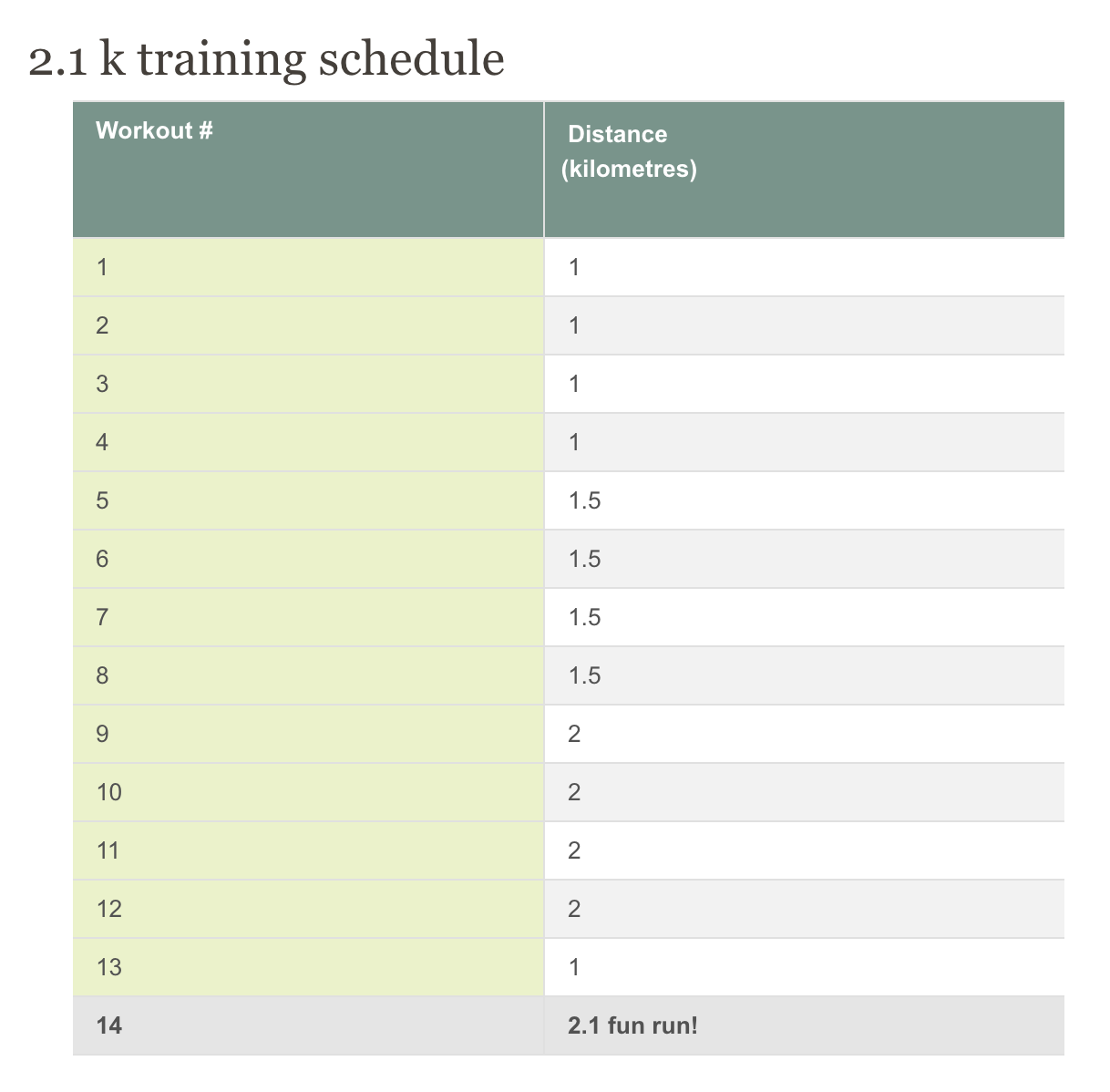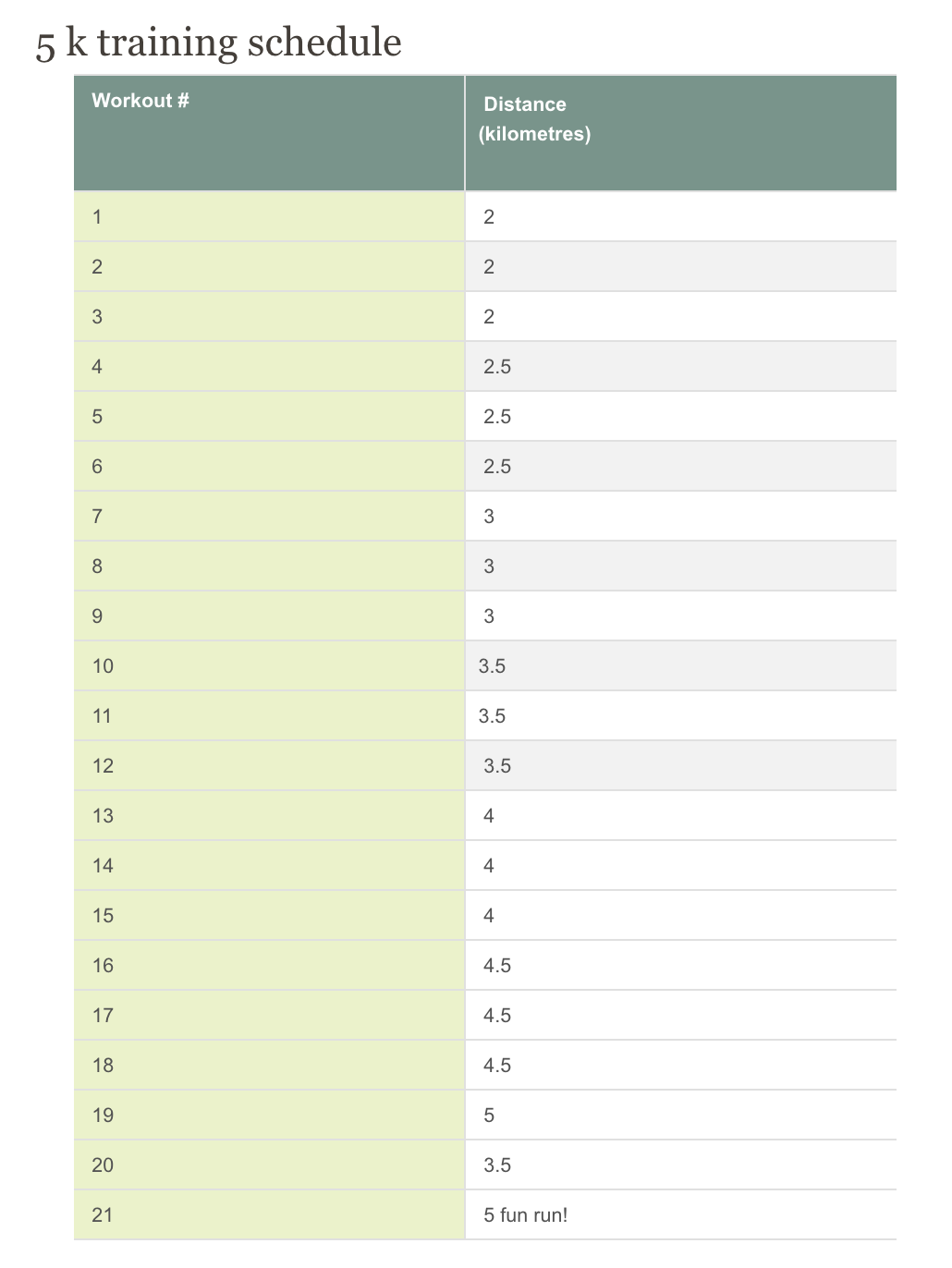Kids Run Club is designed to encourage kids to be more active through running. The goal is to teach the basics of running, keep it fun and help kids improve their endurance over time.
Many Kids Run Club members participate in a final fun run to celebrate their hard work and achievement. This section provides supports and guidance on training for a 2.1, 4.2 or 5 km final fun run.
How KRC training works
Group runs
School groups train together one to three times a week, helping participants gradually increase their running distances. Many have a goal event they’re training for like the Doctors Nova Scotia Youth Run at the Cape Breton Fiddlers Run or the Emera Blue Nose Marathon. The Youth Running Series also offers multiple events from April to October each year that are loads of fun and have options for runners of all ages!
Individual runs
Participants are encouraged to do “homework runs” on their own at least once a week to improve their endurance. Individual runs can be exactly the same as the group run that week.
Warm ups and cool downs
Start all runs with five minutes of brisk walking, slow jogging or running games like tag. Finish all runs with a few minutes of walking, going from brisk to more relaxed, allowing your body to cool down gradually. Follow every run with stretching. Refer to the Runner’s Handbook for stretching exercises.
Running log
Kids Run Club has designed a Runner’s Log to help participants document their runs, track their progress and add comments about their runs. The log also includes the three training programs, a head-to-toe running form checklist and general tips on running.
Three Ps of running
In order to achieve success in running, participants must embrace three Ps of running: pacing, pushing yourself and perseverance/practice. Each runner should find the pace that allows them to run as far as possible without taking a walking break. Learning the different paces of running is important as many new young runners are inclined to run too fast. Running takes hard work and determination; remind your runners to push themselves when possible, go easy on themselves on bad days and celebrate every day they are active.
Adjusting running distances
It’s important to adjust distances according to fitness level, age and motivation. It’s better to set a shorter, more achievable goal initially so that all participants can experience success and have fun and then increase the distance gradually. While young runners, such as those in early elementary, may be capable of running longer distances, distance running may not be suitable for this age group as it may lack the ‘fun factor’ required to keep young kids engaged. Kids Run Club for young runners should stick with shorter distances and include running games to accomplish more activity. For more information about adapting the Kids Run Club training program for younger runners, check out the Coach’s Handbook.



